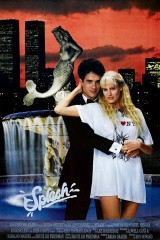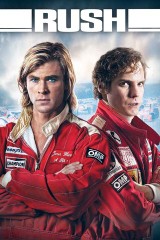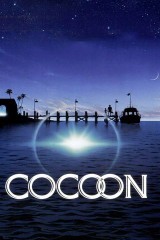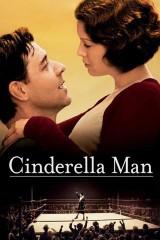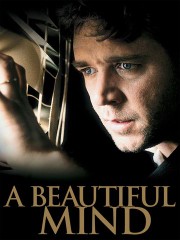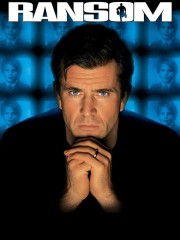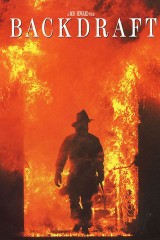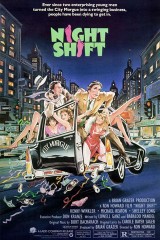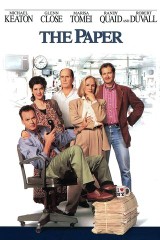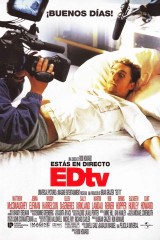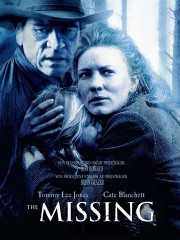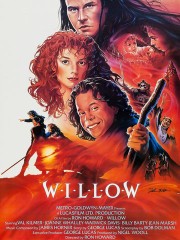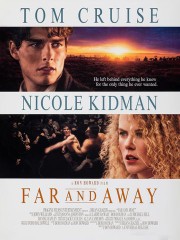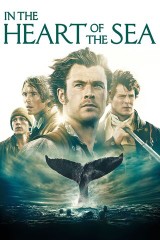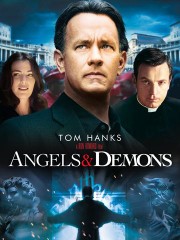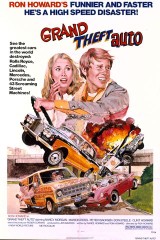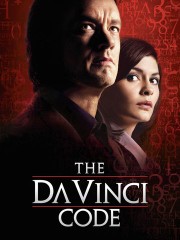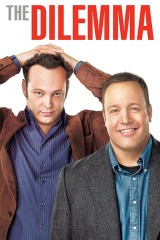
28 Ron Howard Movies Ranked (Apollo 13)
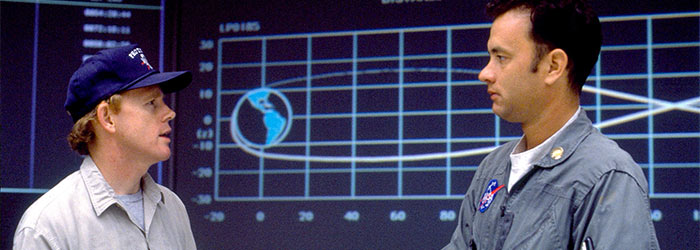
(Photo by Universal/ Courtesy Everett Collection. APOLLO 13.)
A look at Ron Howard’s career will have you wondering if he’s lived just about as many lives as the number of memorable characters he’s actualized on the big screen. His career began in acting as Opie Taylor on The Andy Griffith Show and as Richie Cunningham on the hit sitcom Happy Days, as well as acclaimed films like George Lucas’s coming-of-age picture, American Graffiti (1973).
However, Howard’s true passion lied in directing. His goal was to direct a movie before he exited his teen years. He would not achieve that goal, but he would get that opportunity to direct his first film, Grand Theft Auto, at the young age of twenty-three. Howard would go on to great successes, with fan-favorite films like Cocoon (1985) and How the Grinch Stole Christmas (2000). Or thrillers like the Robert Langdon films: The Da Vinci Code (2006), Angels & Demons (2009), and Inferno (2016). His career is studded with excellent biopics and biographical dramas like Apollo 13 (1995), Frost/Nixon (2008), and A Beautiful Mind (2001).
And he’s no stranger to heartfelt documentary film, such as Jim Henson: Idea Man (2024) and We Feed People (2024), a documentary about José Andrés and his passion for nonprofit food aid to people affected by disaster and war.
On top of his storied acting and directing careers, he’s also a co-founder of Imagine Entertainment, a film and television production company, and a key founder in the Imagine Impact content accelerator program, which helps discover and train the next generation of writers, directors, and creatives.
Let’s dig into the treasure trove that is Ron Howard’s filmography, and examine his most iconic pictures, followed by a Tomatometer ranking of his works. (Tyler Lorenz)
Grand Theft Auto (1977): Ron Howard’s directorial debut is the car-themed action-comedy-romance, Grand Theft Auto, starring Nancy Morgan, Elizabeth Rogers, and Ron Howard himself! When rich girl Paula Powers (Morgan) learns her parents disapprove of her less well-off boyfriend Sam Freeman (Howard), she steals her father’s Rolls-Royce and the young couple head for Las Vegas to get hitched. But danger is on their trail, as Paula’s rich suitor Collins Hedgeworth is in hot pursuit. Ron Howard began principal photography on the film the day after his twenty-third birthday. He says he and his father wrote the script for Grand Theft Auto in less than a month, based only off a movie title Roger Corman gave him, because he so badly wanted to direct his first feature. The film was not a huge critical success, but an essential formative milestone in the director’s hit-studded career.
Roger Ebert on Grand Theft Auto: “A typical Chase-n-Crash, made more entertaining than most because of the attractive personalities of [Ron] Howard and Nancy Morgan.”
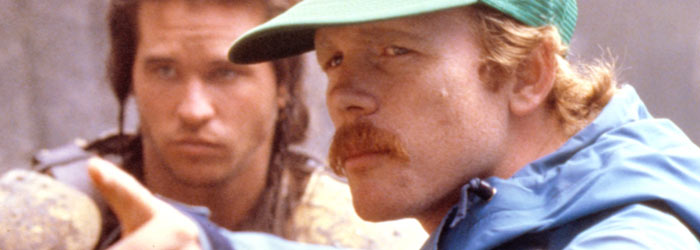
(Photo by MGM. WILLOW.)
Splash (1984): After seven years getting his feet wet in the director’s chair, Ron Howard really made waves with his first (but certainly not last) collaboration with Tom Hanks. In Splash, Allen Bauer (Hanks) falls in love with a beautiful mermaid played by Daryl Hannah. Together, the couple face the dilemma of whether to stay on land and face the threat of government agents or descend into the sea, never to return to dry land. Ron says, “We wanted the picture to be a contemporary film, but we wanted to give it some of the treatment of the old, really romantic style.” The film was nominated for Best Writing, Screenplay Written Directly for the Screen at the Academy Awards.
Radio Times‘ John Ferguson on Splash: “This charming romantic comedy touched a chord with audiences around the world and propelled its stars Tom Hanks and Daryl Hannah, along with director Ron Howard, to Hollywood’s front rank.” (https://www.radiotimes.com/movie-guide/b-mbnlcs/willow/)
Willow (1988): Howard’s flair for the whimsical is in full force in the fantasy epic, Willow. Starring Warwick Davis, Val Kilmer, and Joanne Whalley, Willow follows a magician (Davis) and his warrior companion (Kilmer) who must protect a baby princess from the clutches of an evil queen. Howard was thrilled to team with George Lucas on the film and take advantage of the great visual effects resources at Industrial Light & Magic to give audiences something bold and ambitious. The film was nominated for Best Effects, Sound Effects Editing and Best Effects, Visual Effects at the 1989 Oscars.
Radio Times‘ John Winning on Willow: “The creaky monster effects are a delight, and James Horner’s rousing score elevates the story to epic heights, ensuring that Willow delivers a stirring jolt of old-school escapism.“

(Photo by Universal/ Courtesy Everett Collection. APOLLO 13.)
Parenthood (1989): Howard tackles the charm and chaos of the American family in his ensemble picture, Parenthood. The film confronts a number of predicaments that plague a typical middle-class suburban family: Gil Buckman (Steve Martin) is worried about the mental health of his children and how such problems reflect on his parenting. His sister (Dianne Wiest) is dealing with the pregnancy of her teenage daughter. Another sister (Harley Jane Kozak) is fighting with her husband over the choice to grow their family. And his brother (Tom Hulce) shows up to the house with a young son he has no control over. Howard says they pooled a lot of experiences they had in their own lives for the script. Then the idea for the movie came to him on an airplane flight with his his daughter, Bryce Dallas Howard (who is a talented director in her own right). It was important to himself and the other developers that the comedy be balanced with reality. The film’s plot is so relatable to the American experience that it would eventually be adapted into a television series, once in 1990, which ran for one season, and also in 2010, which ran for six seasons. It received two Academy Award nominations: Best Actress in a Supporting Role (Dianne Wiest) and Best Music, Original Song (Randy Newman).
Tulsa World’s Dennis King on Parenthood: “It’s hard to imagine a theme more universal and filled with human pitfalls than parenthood. And it’s hard to imagine a movie treatment of that theme more humane and filled with gentle sympathy than director Ron Howard’s Parenthood.”
Apollo 13 (1995): Ron Howard reunites with Tom Hanks in Howard’s first Oscar-winning picture, Apollo 13. Tom Hanks, Kevin Bacon, and Bill Paxton play the three astronauts aboard the doomed Apollo 13 command module, in this adaptation of real-life events. When an oxygen tank bursts two days into the moon mission, the astronauts must fight for their lives with the help of ground control and return to Earth against all odds. Howard said in an interview with Charlie Rose, “We had a screening for a number of the astronauts. And Buzz Aldrin came up to me afterward, said ‘Did you find a vault? Some footage in a vault somewhere, that nobody knew about. That’s incredible footage of a launch, which launch was that?’ Well, that was our launch, we generated that one ourselves.” The film was nominated for nine Academy Awards and won for Best Sound and Best Film Editing.
Minneapolis Star Tribune’s Jeff Strickler on Apollo 13: “For Apollo 13, the 1970 space mission, everything went wrong. But for Apollo 13, the movie, everything goes right. Director Ron Howard, who has a history of blowing hot and cold, is so far into his hot mode in this movie that he’s dang near on fire.”

(Photo by Universal/courtesy Everett Collection. A BEAUTIFUL MIND.)
A Beautiful Mind (2001): Mental health is back on the forefront in Howard’s biographical drama, A Beautiful Mind. Russell Crowe portrays real-life mathematician and Nobel Laureate Josh Nash, as he reaches his highest highs in love and academia and faces his lowest lows in a battle with schizophrenia and its strain on his relationships. Howard’s goal with this film was to not treat the film like a case study, but really put the audience inside John Nash’s mind so that they could take the journey with him, and that was a complex challenge for the director. Howard says his choice to cast Russell Crowe was based on a spark of intellect he could sense from Crowe, despite Crowe admitting his did not receive an extensive formal education like the character he would portray. A Beautiful Mind was nominated for eight Oscars and won Best Picture, Best Actress in a Supporting Role (Jennifer Connelly), Best Director (Ron Howard), and Best Writing, Screenplay Based on Material Previously Produced or Published (Akiva Goldman).
Orlando Sentinel‘s Jay Boyar on A Beautiful Mind: “Howard gives Crowe the space he needs to build a memorable character.”
Cinderella Man (2005): Russell Crowe and Ron Howard team up once again for a Depression Era biographical boxing drama, Cinderella Man. The picture follows boxer James J. Braddock, who had to quit his boxing career and join the work force as a longshoreman after sustaining a debilitating injury to his hand. In a stroke of luck, Braddock subs in for a bout against the number-two heavyweight contender, and stuns the world with an unexpected third round knockout. Braddock takes advantage of his second chance and fights his way to a title shot against champion Max Baer. Howard says Russell Crowe approached him with the script following their collaboration on A Beautiful Mind. Howard was particularly interested in addressing the difficulties that Americans experienced enduring the difficult years during the Great Depression. The film is lauded for its rendering of the resilience of the human spirit. It was nominated for three Academy Awards.
Newsweek’s David Ansen on Cinderella Man: “Howard’s movie skillfully delivers that primal, heart-pounding satisfaction that is the promise of all boxing tales.”

(Photo by Walt Disney Studios Motion Pictures /Courtesy Everett Collection. SOLO: A STAR WARS STORY.)
Rush (2013): Howard puts the pedal to the metal in yet another biographical drama, this time focused on the legendary rivalry between Formula One drivers James Hunt and Niki Lauda. When Niki Lauda (Daniel Brühl) bursts onto the scene as an F1 favorite, James Hunt (Chris Hemsworth) is determined to push himself to the limit to defeat Lauda. In a stroke of misfortune during the German Grand Prix, Lauda crashes, sustaining severe burns to his head, face, and lungs, and sending him into recovery and out of contention for any more races. In recovery, Lauda watches as Hunt dominates the F1 stage in his absence. Against his doctor’s orders, Lauda is inspired to rejoin F1 and challenge Hunt again. Howard mentions that the 1970’s are a very important part of his life, and credits that with why he has chosen films from this era, like Rush, Frost/Nixon, and Apollo 13. And while he would like to say he relates to the free spirit of James Hunt, he more closely relates to Niki Lauda, and his belief that success comes not from natural talent but from “effort, focus, understanding, discipline, follow-through”.
The Curvy Film Critic’s Carla Renata on Rush: “Ron Howard directs a high octane, in your face film about two racers at the height of the Formula One racing era. Hemsworth and Bruhl give the performances of their career.”
Solo: A Star Wars Story (2018): Solo: A Star Wars Story began filming in January 2017 under the direction of Phil Lord and Christopher Miller. When the duo were fired in June of 2017 due to creative differences with Lucasfilm, Ron Howard was hired on to helm the project the rest of the way. The film is a prequel focused on the iconic character Han Solo (Alden Ehrenreich), as he navigates his youth under the oppression of the Galactic Empire, learning to smuggle to survive, with the ultimate goal of finding and rescuing his childhood friend and love, Qi’ra (Emilia Clarke). Howard cites a strong, entertaining script for Lawrence and Jonathan Kasdan, and his confidence in the acting talent of Alden Ehrenreich as reason why he felt comfortable coming onboard the project, despite having said in the past that he had little interest in directing a Star Wars movie. The film received one Oscar nomination for Best Achievement in Visual Effects.
Keith & the Movies’s Keith Garlington on Solo: A Star Wars Story: “Howard, Ehrenreich, and company craft a fun and compelling romp that carefully walks the line between Star Wars fan service and old-school action/adventure.”
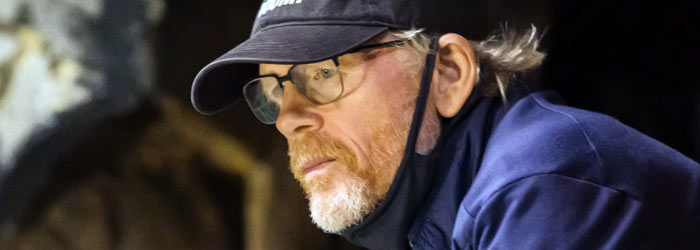
(Photo by Vince Valitutti / © MGM / Courtesy Everett Collection. THIRTEEN LIVES.)
Thirteen Lives (2022): In 2018, 13 youth soccer players and their coach became trapped in the flooded Tham Luang cave. With the aid of the Royal Thai Navy SEALs and the expertise of two British recreational cave divers, the whole team was saved. Inspired by a script that crossed his desk, Ron Howard produced and directed a biographical drama about the events starring Viggo Mortenson, Colin Farrell, and Joel Edgerton. Howard was very concerned with authenticity in the language and culture portrayed in the film. Moreover, he wanted the Thai actors to have confidence in what they were doing. He welcomed advice and criticism of the script from locals, as the input would help make the movie feel realistic. He hoped that if the film appeared in Thai cinemas, it would come off as a Thai movie.
Cinemalogue’s Todd Jorgenson on Thirteen Lives: “Told with urgency and sensitivity, the film diligently captures the massive scope of the international rescue effort — with all of its logistical, psychological, and sociopolitical complications — while maintaining a boots-on-the-ground intimacy.”


